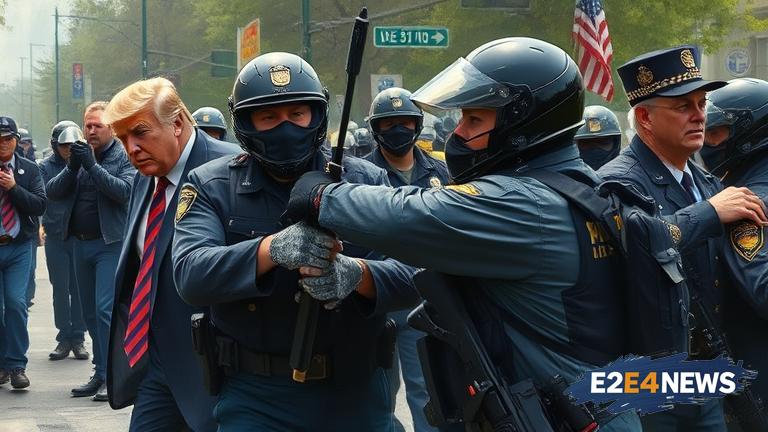In a recent move, former US President Donald Trump has instructed the Immigration and Customs Enforcement (ICE) agency to arrest protesters who engage in violent behavior against law enforcement officers. This directive has sparked intense controversy and debate across the United States, with many questioning the legality and implications of such an order. The move is seen as an attempt to curb the rising tide of violence against police officers, who have been targeted by some protesters in recent months. However, critics argue that the order is an overreach of executive power and could lead to the suppression of free speech and peaceful assembly. The directive has been met with widespread criticism from civil liberties groups, who argue that it is unconstitutional and could be used to target minority communities and political opponents. On the other hand, some law enforcement groups have welcomed the move, citing the need to protect officers from violent attacks. The order has also raised concerns about the role of ICE in domestic law enforcement, with some arguing that the agency’s primary focus should be on immigration enforcement rather than policing protests. As the debate rages on, it remains to be seen how the directive will be implemented and what impact it will have on the relationship between law enforcement and the communities they serve. The move is also likely to be challenged in court, with many expecting a lengthy and contentious legal battle. Despite the controversy, Trump has remained defiant, arguing that the order is necessary to maintain law and order and protect the safety of law enforcement officers. The directive has also sparked a wider debate about the use of force by law enforcement and the need for police reform. Many have argued that the order is a distraction from the real issues facing law enforcement, such as systemic racism and police brutality. Others have pointed out that the order could exacerbate existing tensions between law enforcement and minority communities, leading to further violence and unrest. As the situation continues to unfold, it is clear that the directive has significant implications for the future of law enforcement and the protection of civil liberties in the United States. The order has also raised questions about the limits of executive power and the role of the judiciary in checking the actions of the executive branch. Ultimately, the outcome of this controversy will depend on the courts and the ability of civil liberties groups to challenge the directive and protect the rights of protesters and law enforcement officers alike. The directive is a complex issue with many different perspectives and opinions, and it will likely take time to fully understand its implications and consequences. In the meantime, the debate is likely to continue, with many calling for a more nuanced and balanced approach to addressing the complex issues surrounding law enforcement and protest.
